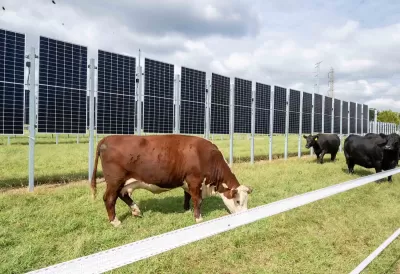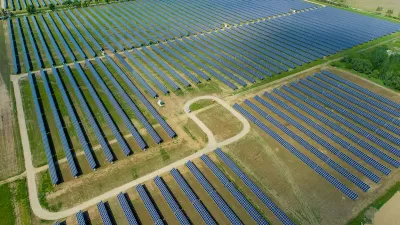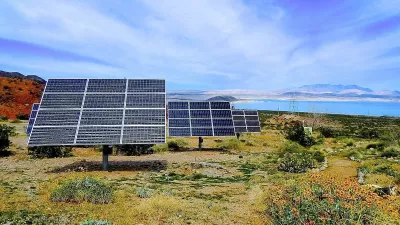A Rutgers University-New Brunswick demonstration farm will evaluate solar array designs to understand how they can best support grazing and agriculture on the same site.

A new research and demonstration project at Rutgers University-New Brunswick combining solar energy production with livestock grazing could help researchers understand how the design of solar installations can facilitate agriculture and ranching on the same sites to prevent the loss of productive farmland to solar farms.
As Kitta MacPherson explains in a Rutgers press release, “The installation on College Farm Road on the George H. Cook campus will allow researchers to investigate how the design affects grazing strategies for beef cattle and ease of hay harvesting. Scientists also will assess whether certain crops fare better in New Jersey’s climate using an agrivoltaics system, compared with crops produced in other regions of the United States employing agrivoltaics.”
Unlike many solar arrays, the Rutgers installation spaces panels far enough apart to let grass grow between rows and provide enough space for cows to graze. According to Rutgers Agrivoltaic Program Lead David Specca, “Our approach emphasizes food production and considers the generated electricity as a low-risk and supplemental income for farmers.” The project could help New Jersey get closer to reaching its renewable energy goals while preserving farmland.
Earlier this year, Ohio state officials gave the go-ahead to a 6,000-acre agrivoltaic project that will combine solar energy production with sheep ranching and agriculture.
FULL STORY: Cows and Solar Panels? In a New Jersey First, Project Melds Farming With Electricity Generation

Planetizen Federal Action Tracker
A weekly monitor of how Trump’s orders and actions are impacting planners and planning in America.

San Francisco's School District Spent $105M To Build Affordable Housing for Teachers — And That's Just the Beginning
SFUSD joins a growing list of school districts using their land holdings to address housing affordability challenges faced by their own employees.

The Tiny, Adorable $7,000 Car Turning Japan Onto EVs
The single seat Mibot charges from a regular plug as quickly as an iPad, and is about half the price of an average EV.

Seattle's Plan for Adopting Driverless Cars
Equity, safety, accessibility and affordability are front of mind as the city prepares for robotaxis and other autonomous vehicles.

As Trump Phases Out FEMA, Is It Time to Flee the Floodplains?
With less federal funding available for disaster relief efforts, the need to relocate at-risk communities is more urgent than ever.

With Protected Lanes, 460% More People Commute by Bike
For those needing more ammo, more data proving what we already knew is here.
Urban Design for Planners 1: Software Tools
This six-course series explores essential urban design concepts using open source software and equips planners with the tools they need to participate fully in the urban design process.
Planning for Universal Design
Learn the tools for implementing Universal Design in planning regulations.
Smith Gee Studio
City of Charlotte
City of Camden Redevelopment Agency
City of Astoria
Transportation Research & Education Center (TREC) at Portland State University
US High Speed Rail Association
City of Camden Redevelopment Agency
Municipality of Princeton (NJ)





























